Liberated Art 1937-1947. Masterpieces saved from war, Preparation | Photo: © Alberto Novelli
The superintendent of the Marche in charge of rescuing masterpieces from Venice, Milan, Urbino and Rome in the deposits of Sassocorvaro and Carpegna, for a total of about ten thousand works under his custody, spent sleepless nights just to supervise these works taken away from the war.
This extraordinary heritage savior, a man of action and an exemplary case in the formation of a professional identity for Italian art historians, is one of the many silent angels who have become interpreters of a great undertaking to safeguard the artistic and cultural heritage during the Second World War, precisely between 1937 and 1947.
The exhibition in progress at Scuderie del Quirinale until 10 April by title Liberated Art 1937-1947. Masterpieces saved from warcurated by Luigi Gallo and Raffaella Morselli and organized by the Scuderie themselves in collaboration with the Galleria Nazionale delle Marche, the ICCD – Central Institute for Cataloging and Documentation and the Luce Archive – Cinecittà, gives an account of this extraordinary undertaking to safeguard a decade long.
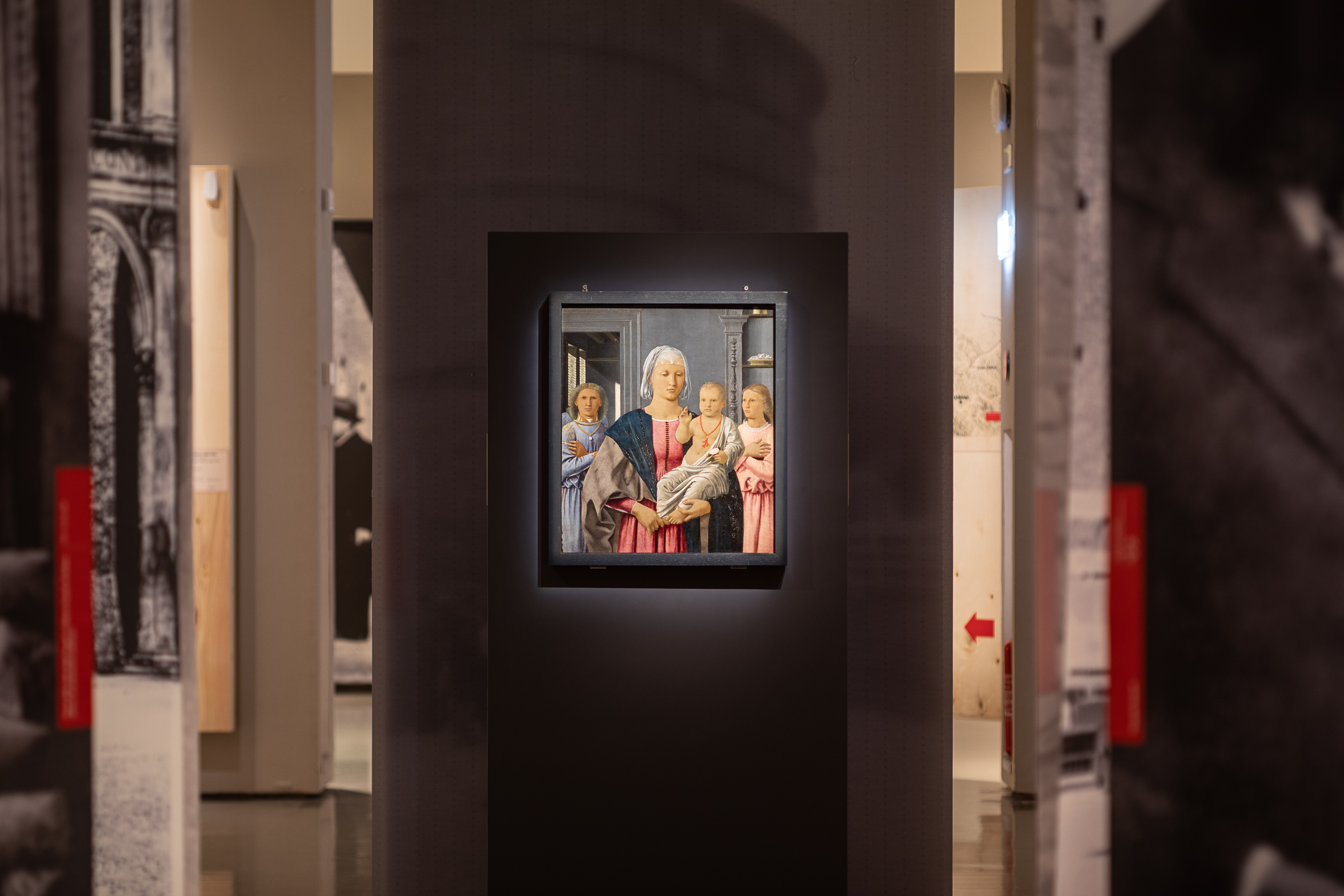
Liberated Art 1937-1947. Masterpieces Saved from the War, Preparation | Photo: © Alberto Novelli
A selection of over one hundred masterpieces saved during the conflict – brought together thanks to the collaboration of forty museums and institutes – weaves a compelling story of a dramatic moment for our country. Extraordinary masterpieces such as the Discobolus Lancellottithe Danae by Tiziano Vecellio – stolen in 1943 and hung in Göring’s bedroom before being recovered, and still works such as Santa Palazia of Guercino, the Madonna enthroned del Riccio from the Cà d’Oro, intertwine with about one hundred and forty photographic reproductions and historical documents, period films, significant testimonies of one of the most dramatic pages in the history of our country.
The fulcrum of the exhibition project is the forward-looking action of those Superintendents and officials of the Fine Arts administration – often forcibly retired after refusing to join the Republic of Salò – who, supported by art historians and representatives of the Vatican hierarchies, they became interpreters, like Pasquale Rotondi, of a great undertaking to safeguard the artistic and cultural heritage.
Giulio Carlo Argan, Palma Bucarelli, Emilio Lavagnino, Vincenzo Moschini, Fernanda Wittgens, Noemi Gabrielli, Aldo de Rinaldis, Bruno Molajoli, Francesco Arcangeli, Jole Bovio and Rodolfo Siviero were some of the protagonists who, with limited means, became aware of the impending threat on works of art, siding in the front line to avert it, aware of the educational, identity and community value of art.
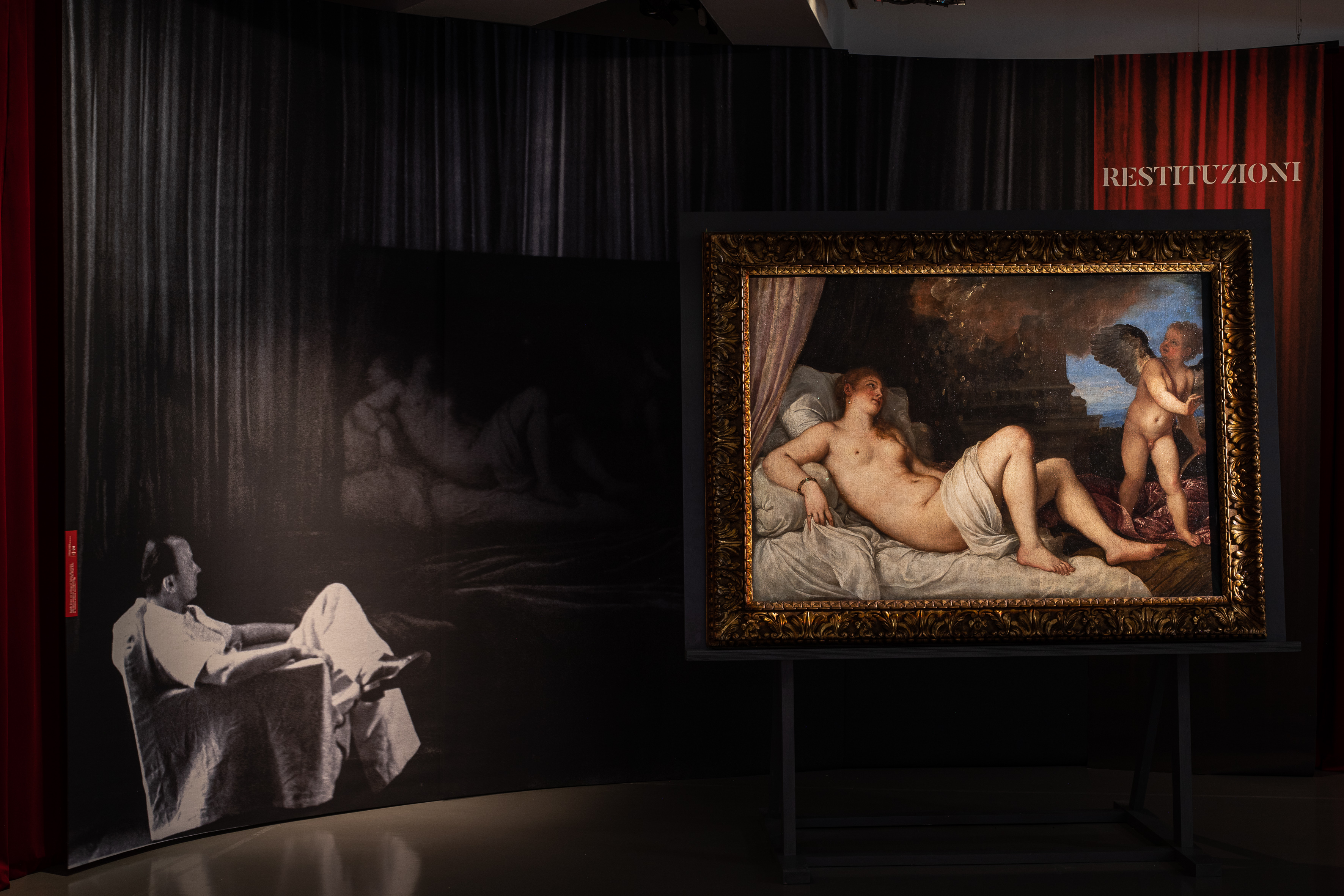
Liberated Art 1937-1947. Masterpieces Saved from the War, Preparation | Photo: © Alberto Novelli
“It is an exhibition that talks about our identity – explains Luigi Gallo, director of the Galleria Nazionale delle Marche and curator of the exhibition together with Raffaella Morselli -. The selection of the works, by no means random, was made on the basis of a rigorous archival investigation that starts from the inventories, from the lists drawn up by the directors and superintendents of the time, from their diaries and from the historical photographs that represented these works. 1937 is the date of the purchase of the Discobolus1947 that of the restitution of the Danae by Titian, which closes the exhibition at the Scuderie. In between is the war. We used three different approaches according to a very rigorous criterion. We have drawn up a list of dozens of works belonging to the saved heritage, which we have shared with the lending museums, trying to find the best solutions also with respect to the protection of the exhibited works. On average, museums have lent between two and five works. The National Gallery of the Marches is a partner in the organization of this exhibition and it is precisely because one of the main interpreters who organized the largest of the national deposits was Pasquale Rotondi, the historic director of Palazzo Ducale in Urbino, Superintendent of the Marches since 1939 to about 1949. I worked on this exhibition starting from the figure of Rotondi whose desk I also occupy at this moment, so it seemed right to me that Palazzo Ducale should participate in the initiative with an important loan”.
Of the fifty works that arrived at the Scuderie del Quirinale to tell the story of Rotondi’s work and his extraordinary collection of materials, thirteen were in fact loaned by the Galleria Nazionale delle Marche. Among the compelling stories that unfold in the exhibition through three main narrative strands, there is, at the center of the first nucleus, the one concerning forced exports and the art market. In fact, the itinerary looks at the alteration undergone by the market in the aftermath of the stipulation of the Rome-Berlin axis. To satisfy the collecting cravings of Adolf Hitler and Hermann Göring, the fascist hierarchs favored the permission to sell important works of art, even under bondage.
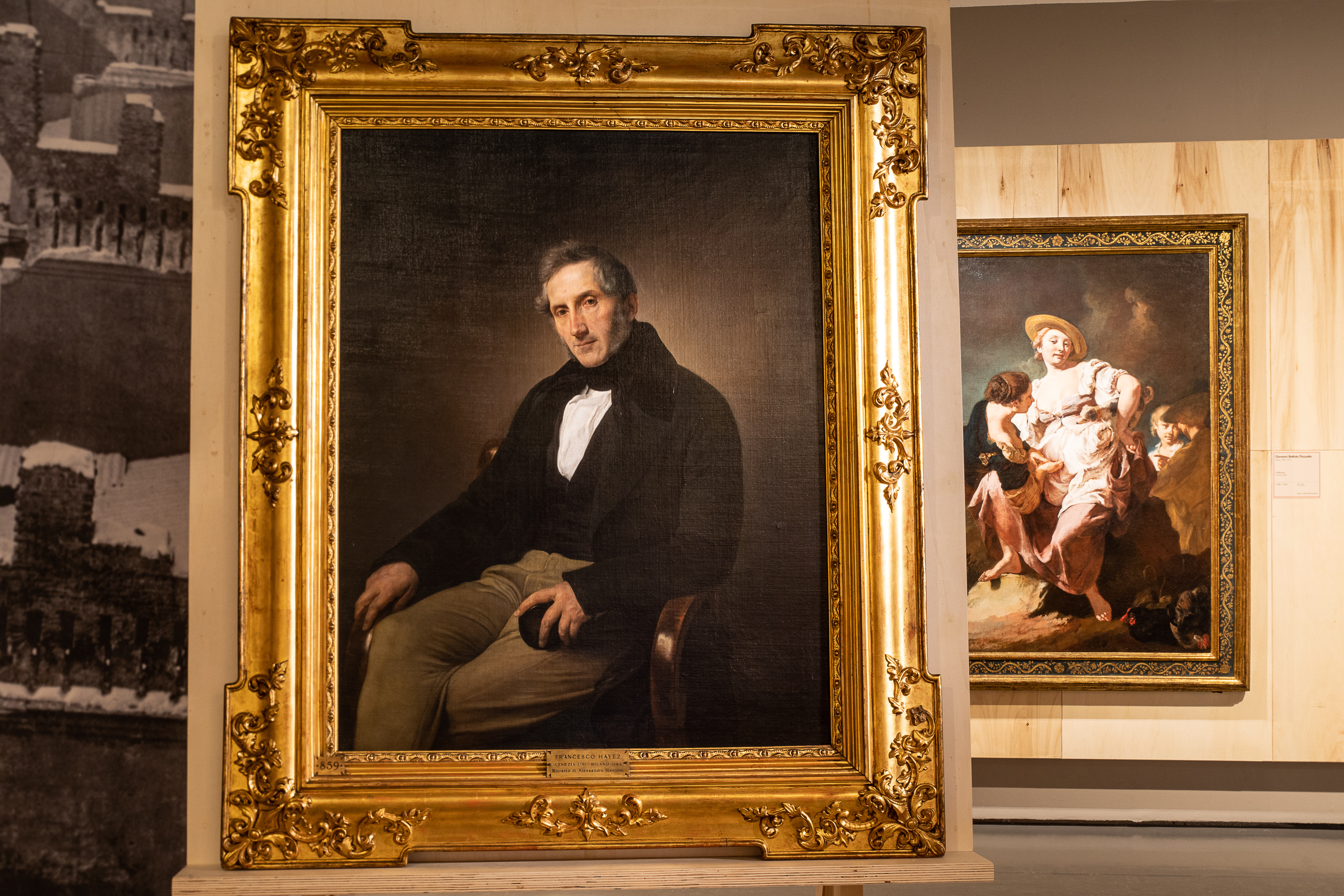
Liberated Art 1937-1947. Masterpieces Saved from the War, Preparation | Photo: © Alberto Novelli
“This is the case with Discobolus Lancellotti – explains Gallo – part of the works forcibly purchased by Hitler despite being under bond since 1909. Hitler saw in Discobolus the perfect ideal of Aryan beauty. And despite the minister’s opposition, the work left for Germany and in 1938 was donated to the German people and exhibited in Munich to return only in 1948 thanks to the intercession of Rodolfo Siviero, an authentic 007 of art”.
The second nucleus of the exhibition – Transfers and shelters – finds its beginning in 1939, when, with Hitler’s invasion of Poland, the Minister of Education Giuseppe Bottai implemented operations to secure the cultural heritage, drawing up a plan for the movement of the masterpieces. From here the path weaves many stories, from the relationship between the Italian superintendents and the Vatican to the fundamental commitment of female curators such as Fernanda Wittgens, Palma Bucarelli, Noemi Gabrielli, Jole Bovio. Pasquale Rotondi, the young superintendent of the Marches who, in charge of preparing a national deposit, saved several works, plays a key role in this section.
“In the space of a month – continues the director of the Galleria Nazionale delle Marche – Raimondi managed to save six thousand works by stuffing everything into crates that he put in storage between Sassocorvaro, Carpegna and Urbino. He was by no means a diplomat. He arrived in Urbino in October 1939 and was commissioned to build warehouses with rudimentary fire and burglar alarm systems, all bought with loan money, even making jokes because the ministry didn’t send money. He often found himself moving the works with borrowed trucks. It was the same for Emilio Lavagnino who traveled throughout Lazio aboard a Topolino, borrowing the wheels from Palma Bucarelli. They are people who have put their heritage before their own lives”.
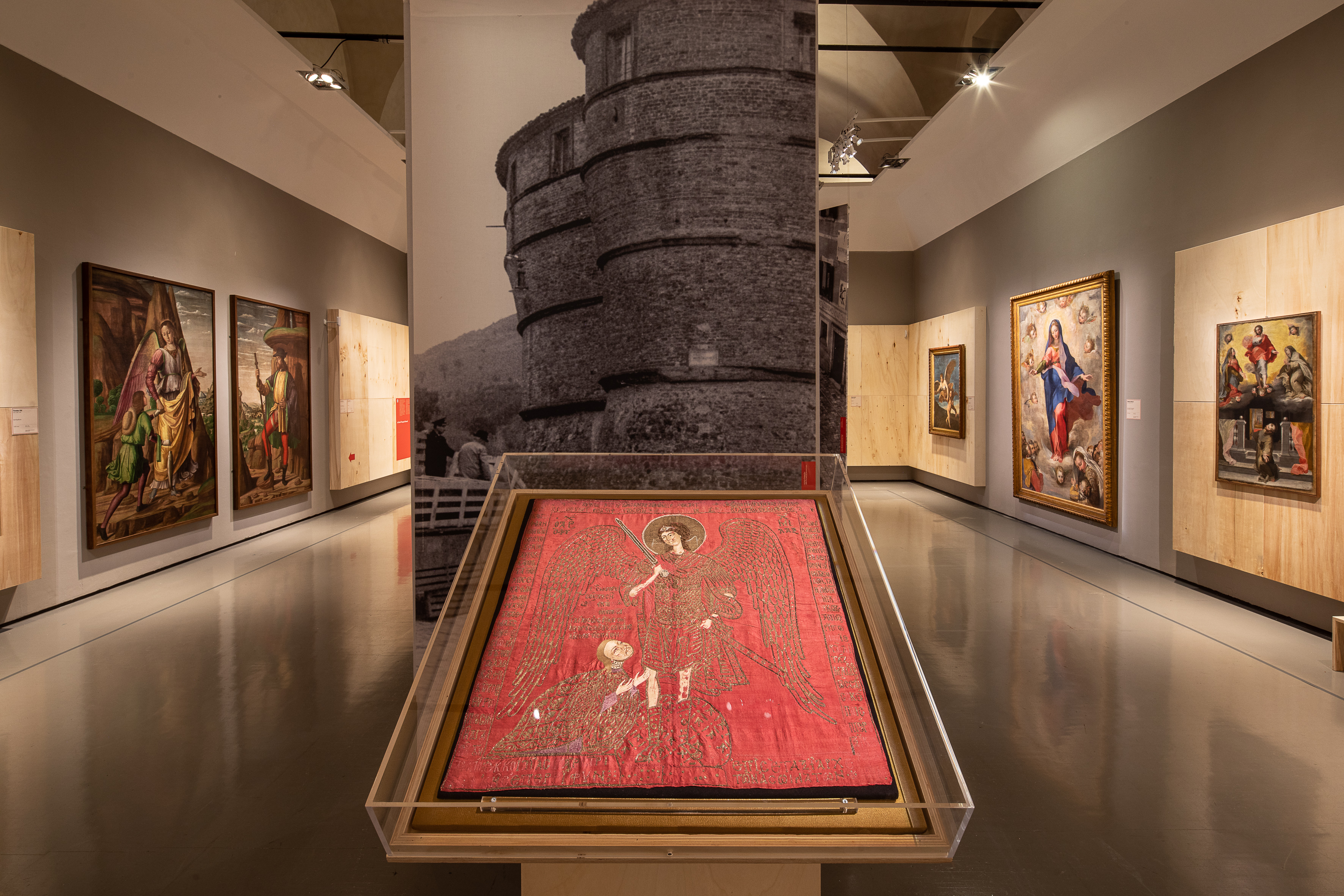
Liberated Art 1937-1947. Masterpieces Saved from the War, Preparation | Photo: © Alberto Novelli
The common thread of the exhibition at the Scuderie is the love for art that distinguishes all these heroes of the safeguarding of world heritage, young Italian superintendents who have considered heritage as the backbone of national identity.
“The end of the conflict and the restitutions”, the title of the third and final section of the itinerary, details the missions for the recovery and safeguarding of the works stolen at the end of the war. The Italian officials were joined by the men of the “Monuments, Fine Arts, and Archives Program” (MFAA), a task force made up of art professionals from thirteen different countries and set up by the Allies during the Second World War to protect cultural heritage and works of art in war zones. It is from the experience of those art historians that a new way of understanding the protection and enhancement of cultural heritage originates, starting with the foundation of the current Carabinieri Command for the Protection of Cultural Heritage.
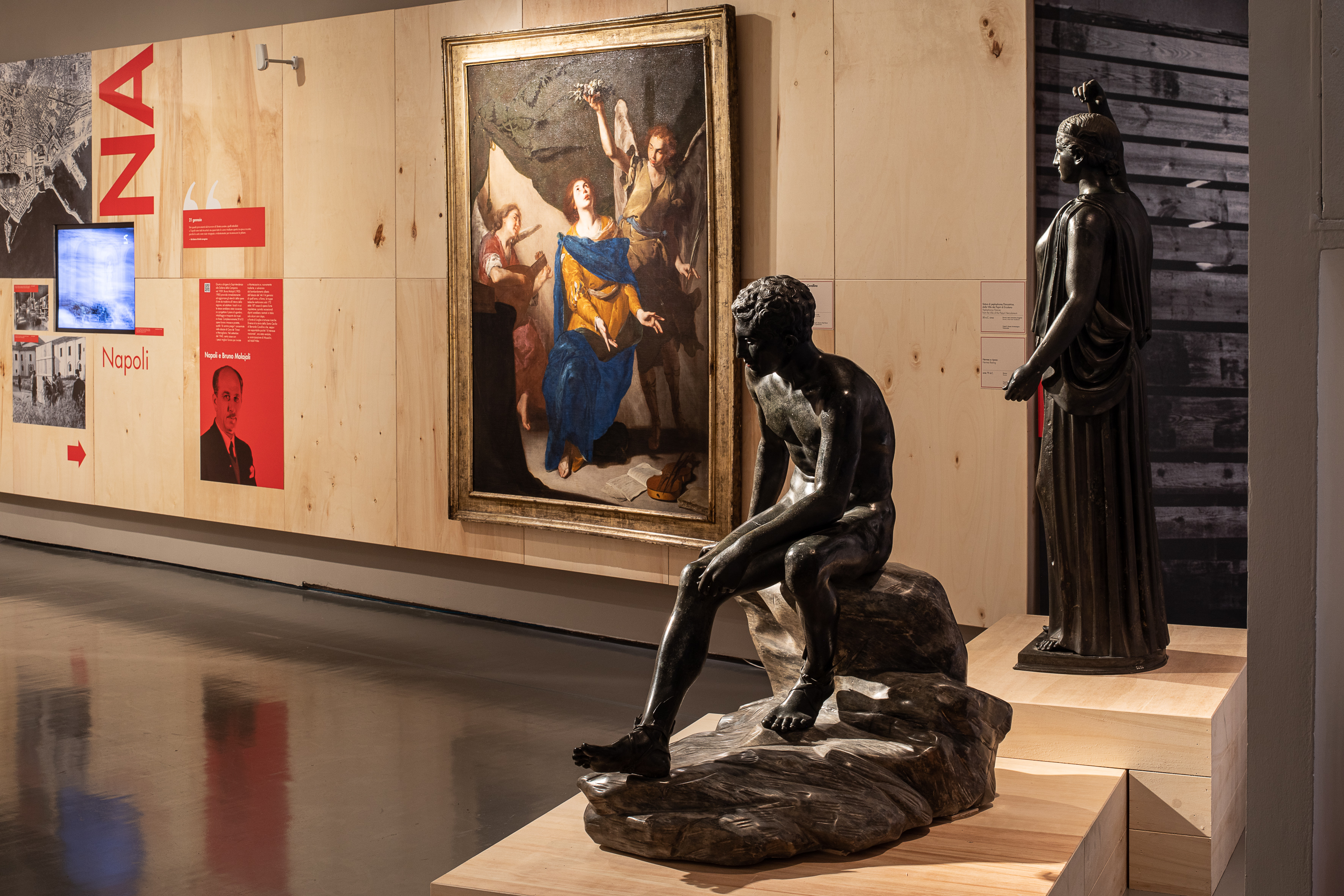
Liberated Art 1937-1947. Masterpieces Saved from the War, Preparation | Photo: © Alberto Novelli
In addition to being the protagonist in Rome until 10 April in the exhibition dedicated to liberated art, the National Gallery of the Marches looks forward to the new year’s events with its director.
“For 2023 – announces Luigi Gallo – we are preparing two exhibition initiatives. The first exhibition, curated by Luca Molinari, and which will open in May, is dedicated to Palazzo Ducale as an object of reflection for architects. In September, however, we will have a path dedicated to the treasures of our deposits, large pieces, never exhibited to the public, which we are having restored and which come from the area, placed in storage. At the same time I am preparing an exhibition by myself which will open in 2024 dedicated to Federico Barocci, the great interpreter of Urbino painting. And again, after the opening of the second floor last July, Palazzo Ducale will see the noble floor fully rearranged over the next two years”.
![]() Read also:
Read also:
• The triumph of Baroque Genoa at the Scuderie del Quirinale

